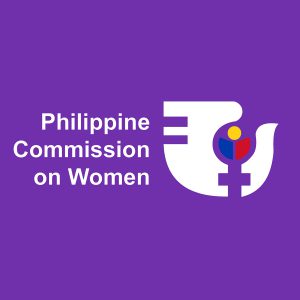Women’s Political Participation and Representation
This policy brief provides the rationale and recommendations for promoting and accelerating women’s political participation and representation in elective positions through the adoption of a gender quota and other temporary special measures.
WHAT IS THE ISSUE? WHY IS THE ISSUE IMPORTANT?
Women’s right to participation and representation in all spheres of life is vital in fully realizing their role as agents and beneficiaries of development. Women comprise half of the country’s population, and yet they hold only about one-fifth of government elected positions. Women in key positions in government have shown that they are as capable and effective as their male counterparts in assuming leadership and decision-making roles. While men can and do participate in crafting gender-responsive laws and programs, they cannot always nor fully represent the interests of women considering their differentiated needs, issues, socialization and experiences. Promoting women’s representation in elected bodies allows them to contribute to development and nation-building, and ensure that governance leads to equal access to resources and to development results and outcomes for both women and men, girls and boys.
While the country has made great strides in promoting and increasing women’s political participation, with two women having held the highest position in government as President of the Republic of the Philippines, the proportion of women in politics or public office is still yet to meet the 30 percent “critical mass,” which scholars identify as the minimum percentage necessary for a minority group to be able to influence decision making. From 1998 to 2016, the percentage of women elected into public office ranged from 16.1 percent to 21.44 percent, reaching its peak in the 2016 elections. In the 2019 National and Local Elections, only 20.16 percent (8,782) of the candidates were female.
The slow increase in women’s representation in politics may be attributed to prevailing patriarchal norms and values, and gender stereotypes. It has often been said that politics is more the realm of men than women. Gender stereotypes that consider women as weak, emotional and indecisive – qualities that are undesirable in negotiation and decision-making – discourage voters from voting for women candidates. At the same time, the “multiple burden” experienced by most women, wherein they bear most of the responsibility for performing domestic duties while they engage in political, economic and social activities discourages women themselves from running for public office.
The country’s electoral system, which follows a “first-past-the-post” or plurality system where the winner takes it all, affects the preference of political parties or groups to finance male candidates who are perceived to have higher probabilities of winning the election. The difficulty of women in finding sufficient resources for costly electoral campaigns tends to hinder them from running for elective government positions.
The proportional system of representation under the Party-List System Act (Republic Act 7941), which encourages a type of party politics that is not personality-based but rather one that is anchored on principles or programs, could have been a good entry point for women’s increased representation in the legislature. Nonetheless, except in the case of women’s party-list groups, the tendency to place women at the bottom or the last spot of the list from which party-list representatives shall be chosen in case the party obtains the required number of votes still impedes women from getting elected under this system.
At the local level, Section 9, Article X of the 1987 Constitution states that “[l]egislative bodies of local governments shall have sectoral representation as may be prescribed by law. Section 41(c) of the Local Government Code (Republic Act 7160) states that “… there shall be one (1) sectoral representative from the women, one (1) from the workers, and one (1) from any of the following sectors: the urban poor, indigenous cultural communities, disabled persons, or any other sector as may be determined by the sanggunian concerned…” (Emphasis supplied) Its implementation is still at a halt given that the enabling law for this constitutional and statutory policy on local sectoral representation is yet to be enacted.
Considering all these and given the existing constraints to women’s political participation, there is, therefore, a need to adopt temporary special measures to facilitate and accelerate the attainment of de facto gender equality between women and men in terms of political participation and representation.
One of the most popular and widely-used strategy is the adoption of a gender quota system as a temporary special measure for the attainment of gender balance in government institutions. Under the gender quota system, a certain number or percentage of the members of a particular body are allocated to a particular sex. Countries such as Argentina, Brazil, and France have adopted candidate quotas which regulate the gender composition of the candidate lists of political parties in the election. Rwanda, Timor-Leste, and India, on the other hand, have legislated ‘reserved seats’, which “regulate by law the gender composition of elected bodies, by reserving a certain number or percentage of seats for women members, implemented through special electoral procedures.” Party quotas (also called voluntary party quotas) are adopted in Australia, Canada, Germany, and Switzerland. These quotas are “adopted by individual parties for their own candidate lists, and are usually enshrined in party statutes and rules.” Nonetheless, a lot of countries are also adopting gender-neutral quotas that provide that neither sex shall occupy more than a given percentage of seats. This type of quota may also be in the form of a requirement for alternating female and male candidates on candidate lists such as those of France, Costa Rica, Ecuador, Republic of Korea, Lesotho and Zimbabwe. As of February 2019, 50 single or lower houses were composed of 30 per cent or more women; more than half of these countries have applied some form of quotas – either legislative candidate quotas or reserved seats.
It is important to ensure that women’s representation will not only be a token. The challenge is to form a critical mass of women in elective positions so that their voices will be heard. At the same time, measures should focus on building the capacity and enhancing leadership and decision-making skills of women to be able to effect change and influence policy discussions.
WHAT ARE THE EXISTING LAWS OR POLICIES RELATED TO THE ISSUE?
The 1987 Constitution, upholds the fundamental equality before the law of women and men and recognizes the vital role of women in nation building. It also guarantees citizens’ equal access to opportunities for public service. Furthermore, as stated in the previous section, it provides for sectoral representation, which includes women, at the local level.
The Magna Carta of Women (MCW, Republic Act 9710) provides under Section 11 the undertaking of “temporary special measures” to accelerate the participation and equitable representation of women in all spheres of society particularly in the decision-making and policy-making processes in government and private entities to fully realize their role as agents and beneficiaries of development.” It mandates the adoption of temporary special measures for the incremental increase of women in third level positions in the civil service until a fifty-fifty (50-50) gender balance is achieved; sets a forty percent (40%) quota for women in local development councils and planning bodies; and provides for the creation of an incentive system for encouraging political parties to integrate women in their leadership hierarchy and electoral nominating processes, among others.
The representation of women in legislative bodies is provided under Section 41(c) of the Local Government Code; as well as under Republic Act 7941 or the “Party-List System Act,” which includes women in the list of marginalized sectors that may form a political party and vie for representation under the party-list system.
These national mandates are aligned to the Convention on the Elimination of All Forms of Discrimination Against Women (CEDAW), which directs State Parties to take all appropriate measures to eliminate discrimination against women in the political and public life of the country and, in particular, to ensure the rights of women to participate in the formulation of government policy and the implementation thereof, and to hold public office and perform all public functions at all levels of government, on equal terms with men [Article 7(b)].
The Beijing Declaration and Platform for Action (BPfA), adopted at the United Nations Fourth World Conference on Women in Beijing in 1995, calls on all parties to implement affirmative action for the equal participation of women and men in decision making in order to strengthen democracy and promote its proper functioning.
Moreover, the United Nations Sustainable Development Goals, particularly Goal No. 5 on achieving Gender Equality, targets women’s full and effective participation and equal opportunities for leadership at all levels of decision-making in political, economic and public life.
POLICY RECOMMENDATIONS
Women’s representation is crucial in the realization of development goals for it is through their representation that their voices are heard, and their issues, concerns, and perspectives are made an integral part of decision- and policy-making processes that affect their lives. Nonetheless, social, economic and structural barriers that hinder women’s full participation and representation still exist. Thus, the PCW recommends the adoption of a gender quota and other temporary special measures as affirmative actions that would level the playing field and provide equal opportunities for women to run and be elected into public office. These measures are as follows:
1. Adopt a candidate gender quota, which provides incentives to political parties who have reached the quota in their leadership and policy-making structure and/or roster of candidates for the elections, using the forty-sixty (40-60) formula, wherein neither sex comprise less than 40 percent nor more than 60 percent of the number of candidates in the party slate;
2. Create a women’s campaign fund for aspiring women candidates, especially those belonging to marginalized sectors;
3. Enjoin political parties to develop a women and Gender and Development (GAD) agenda;
4. Specific to the party-list system, provide a rule on the ranking order of candidates in the form of a closed “zebra” or alternate female-male listing of candidates who shall become the party’s representative depending on the number of seats the party would be able to win; and
5. Pass the enabling law for the unimplemented constitutional and statutory policy on local sectoral representation for (a) the election on women sectoral representatives in the Sangguniang Panlalawigan, Sangguniang Bayan and Sangguniang Panglunsod, and (b) the setting of the requirements for the registration of sectoral organizations/coalitions and the qualification of sectoral nominees.
DOWNLOAD a copy.

